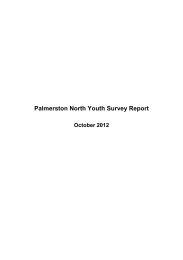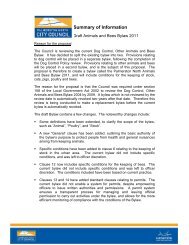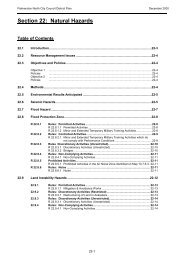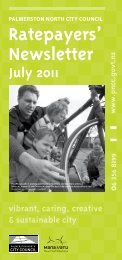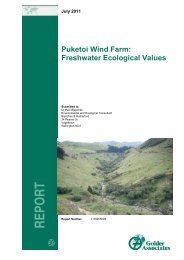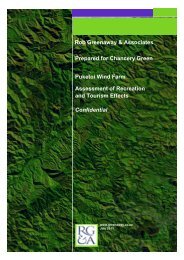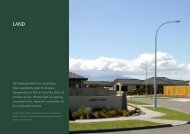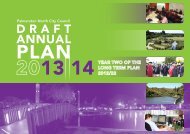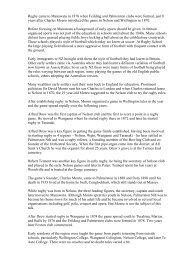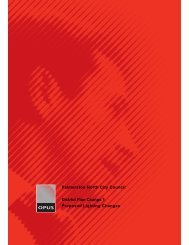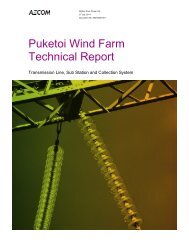Rural-Residential Land Use Strategy Discussion Document - May
Rural-Residential Land Use Strategy Discussion Document - May
Rural-Residential Land Use Strategy Discussion Document - May
Create successful ePaper yourself
Turn your PDF publications into a flip-book with our unique Google optimized e-Paper software.
PART 3: ISSUES AND OPTIONS FOR RURAL RESIDENTIAL DEVELOPMENT<br />
Overview of issues<br />
There is little written guidance about what sustainable subdivision development may mean with respect<br />
to rural-residential subdivisions.<br />
This type of development presents a distinct set of issues that should be considered and planned for.<br />
Such issues may include the following:<br />
• <strong>Rural</strong>-residential properties are desired by people who wish to live in a rural environment. Such<br />
development can have the potential to destroy the very features that these people have come to the<br />
rural environment for, such as privacy, open ’natural’ surroundings and quiet. Often rural-residential<br />
development occurs in, or near, attractive or sensitive landscapes such as adjacent to waterbodies<br />
and native bush. Special landscape and ecological protections may need to be planned for.<br />
• As land is developed for rural living, future options for the productive agricultural use of the land<br />
are reduced, particularly where this occurs on elite or more versatile soils.<br />
• Fragmentation of farmland effectively limits future production choices for the land. Farm parks or<br />
similar concepts can provide a rural residential lifestyle while keeping farming activities intact and<br />
having only minor effects on rural character.<br />
• There is some evidence that a lack of properties in the 0.5ha to1.5ha range is encouraging people to<br />
purchase four hectare lots for their rural living activities. This takes up more land than is needed and<br />
leaves some purchasers with land they find difficult to manage. However, a predominance of these<br />
smaller blocks also risks the creation of rural areas with housing intensities closer to levels in lower<br />
density suburban areas.<br />
• Large areas of similar rural-residential blocks will often radically alter the rural landscape, sometimes<br />
causing the landscape to take on more of an ‘urban‘ character than a rural one. If this is an issue for local<br />
communities, such change may need to be managed by appropriate planning, informed by an accurate<br />
assessment of existing landform patterns and visual impact. For example, small compact houselots<br />
(hamlets) surrounded by open farm land may better preserve the rural open character of the plains.<br />
• <strong>Rural</strong>-residential development on the outskirts of the City, if not appropriately located and designed,<br />
can constrain plans for controlled urban growth. If staged expansion is intended for the future,<br />
planning mechanisms need to be in place in these potential expansion areas, to secure appropriately<br />
designed and well-integrated neighbourhood communities. There are examples in Palmerston North<br />
where rural residential developments, located close to planned growth areas have now been infilled<br />
and retrofitted, and are poorly integrated with the surrounding residential community.<br />
• Setting up rural-residential developments away from established water and sewage reticulation<br />
requires private infrastructure systems. If private systems are not properly constructed or maintained<br />
this creates the risk of adverse impacts on the environment. Council can also face mounting pressure<br />
to provide reticulated infrastructure systems, which may be inefficient. There are potentially high<br />
costs to Council, if failing private systems have to be taken under public control, in order to avoid<br />
adverse effects on the environment.<br />
• <strong>Rural</strong>-residential areas usually do not cater well for bicycle and walking traffic. Walking along rural<br />
country roads can be very dangerous due to narrow roads with limited shoulders and traffic speeds.<br />
• Additional traffic from rural-residential subdivision development on unsealed roads can create noise<br />
and dust nuisance.<br />
14



